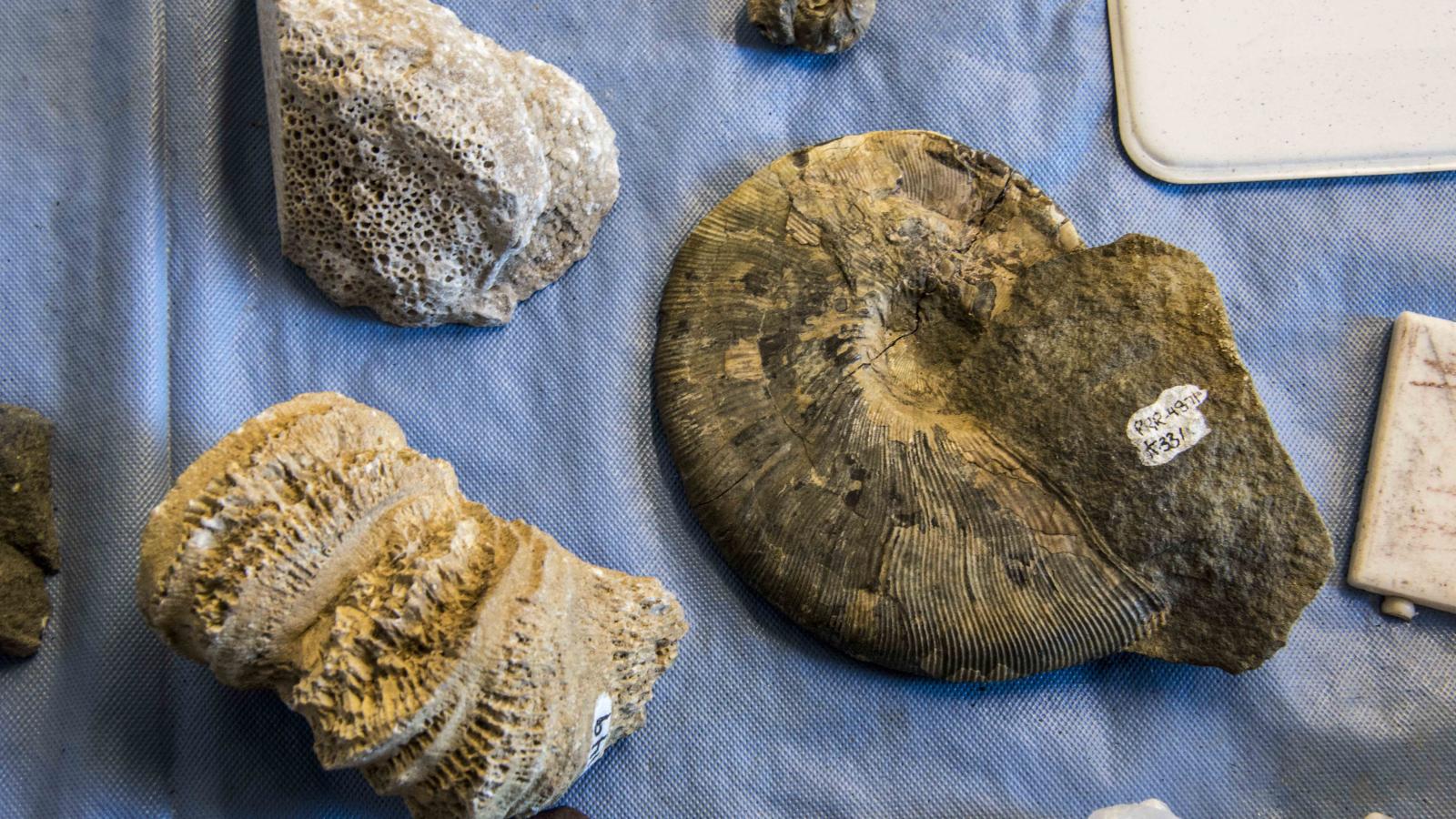Antarctica holds evidence of the past in its rock record. The following fossils are a few of the samples in the Polar Rock Repository's vast collection that document how the continent and its ecosystems have changed.
PRR-20163: A gastropod from within the Antarctic Peninsula on Seymour Island. It was collected by Prof. David Elliot in 1987.
Gastropod
PRR-20162: A mollusk from Seymour Island in the Antarctic Peninsula. It was found by Prof. David Elliot in 1987.
Mollusk
PRR-20160: This ammonite is from the Cretaceous period, was found on Seymour Island within the Antarctic Peninsula. It was found by Prof. David Elliot in 1987.
Ammonite
PRR-21914: This fern fossil was found on Snow Island within the Antarctic Peninsula. It is early Cretaceous in age, and was found by geologist Rosemary A. Askin in 1980.
Fern (Pachypteris indica)
PRR-39349: This is a dicrodium fossil from Southern Victoria Land in Antarctica. It was collected by Prof. David Elliot in 2002.
Dicrodium
PRR-12481: This glossopteris fossil was found in the Southern Transantarctic Mountains during a 1963-64 field season by geologist William E. Long. Glossopteris is an extinct genus of ferns that was named after their tongue-shaped leaves.
Glossopteris
PRR-21946: This fern fossil was found on Snow Island within the Antarctic Peninsula. It is Early Cretaceous in age, and was found by geologist Rosemary A. Askin in 1980.
Fern (Zamites snowensis)
PRR-21958: This fern fossil was found on Snow Island within the Antarctic Peninsula. It is Early Cretaceous in age, and was collected by geologist Rosemary A. Askin in 1980.
Fern (Taeniopteris lobatus)

